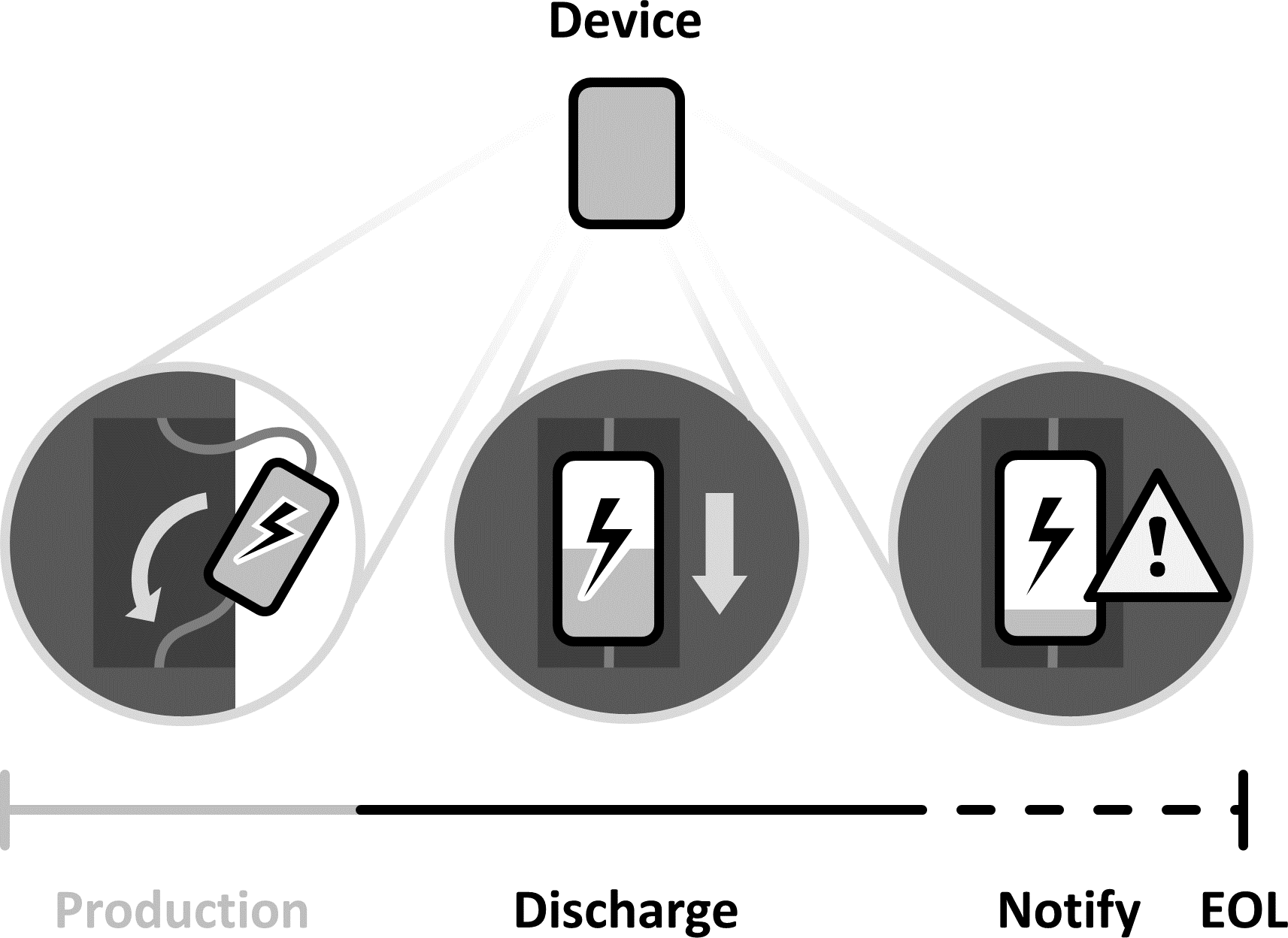Lifetime Energy-Limited Device
![]()
Devices that are mobile or located in remote places cannot rely on fixed infrastructure. When they require a small amount of power and need a robust construction, use a built-in power source.
Aliases:
Non-replaceable Battery
Context:
You have a device that needs to be powered. The device needs only a small amount of energy to function.
Problem:
You need to power a device, which requires a small amount of power. The device is mobile or located in a remote place. You want to minimize maintenance.
Forces:
-
Mobility: The device has to be mobile, thus, being a Mains-Powered Device is not an option.
-
Location The device may be placed in a remote location far of the grid, where common infrastructure such as powerlines are not available. Thus, being a Mains-Powered Device is not an option. The location may also provide no suitable form of ambient energy for an Energy-Harvesting Device.
-
Maintenance: A Period Energy-Limited Device is not an option because replacing or recharging a battery in frequent intervals is too much effort.
-
Energy Requirements: Being an Energy-Harvesting Device on its own is not an option, because it does not deliver the required power.
-
Lifetime: You know the maximum lifetime of the device.
-
Ruggedness: The device is intended to be used in environments where a rugged device enclosure is needed.
Solution:
Build an energy source into the device, which will last for the entire expected lifetime of the device.

Solution Details:
Benefits:
Variants:
Related Patterns:
Known Uses:
- L. Reinfurt, U. Breitenbücher, M. Falkenthal, F. Leymann, and A. Riegg, “Internet of Things Patterns for Devices: Powering, Operating, and Sensing,” International Journal on Advances in Internet Technology, vol. 10, no. 3 & 4, pp. 106–123, 2017. Available at http://www.iariajournals.org/internet_technology/inttech_v10_n34_2017_paged.pdf